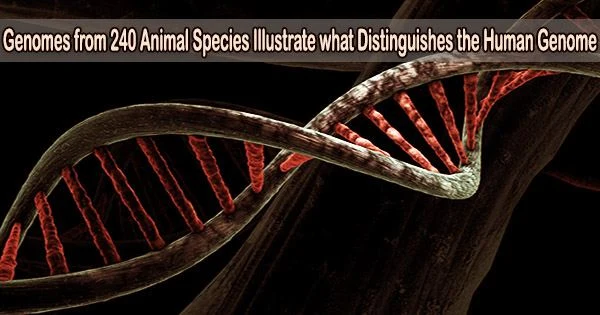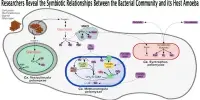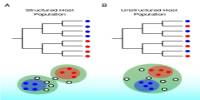Mammals have adapted to practically every ecosystem on Earth over the last 100 million years. Scientists with the Zoonomia Project have been mapping mammalian genome variety by comparing DNA sequences from 240 current species, ranging from the aardvark and African savanna elephant to the yellow-spotted rock hyrax and the zebu.
The Zoonomia team demonstrated this week in several papers published in a special issue of Science how comparative genomics can not only shed light on how certain species achieve extraordinary feats, but also help scientists better understand the functional parts of our genome and how they may influence health and disease.
The researchers found portions of the genomes, often only single letters of DNA, that are most conserved, or unmodified, across mammalian species and regions that are presumably biologically relevant after millions of years of evolution in the new study.
They also discovered a genetic underpinning for unusual mammalian features such as the ability to hibernate or detect weak scents from great distances. They also identified species that may be especially vulnerable to extinction, as well as genetic mutations that are more likely to be responsible in rare and prevalent human diseases.
The findings come from analyses of DNA samples collected by more than 50 different institutions worldwide, including many from the San Diego Wildlife Alliance, which provided many genomes from species that are threatened or endangered.
More than 150 people from seven different time zones have contributed to the Zoonomia Project, which is the world’s largest comparative mammalian genomics database. The effort is led by Elinor Karlsson, director of the vertebrate genomics group at the Broad Institute of MIT and Harvard and a professor of bioinformatics and integrative biology at the UMass Chan Medical School, and Kerstin Lindblad-Toh, scientific director of vertebrate genomics at the Broad and a professor of comparative genomics at Uppsala University in Sweden.
We’re very enthusiastic about sequencing mammalian species. And we’re excited to see how we and other researchers can work with this data in new ways to understand both genome evolution and human disease.
Lindblad-Toh
“One of the biggest problems in genomics is that humans have a really big genome and we don’t know what all of it does,” said Karlsson. “This package of papers really shows the range of what you can do with this kind of data, and how much we can learn from studying the genomes of other mammals.”
Exceptional traits
In one of the studies published today, co-first authors Matthew Christmas, a researcher at Uppsala University, and Irene Kaplow, a postdoctoral researcher at Carnegie Mellon University, along with Karlsson, Lindblad-Toh, and collaborators, found that at least 10% of the human genome is highly conserved across species, with many of these regions occurring outside of protein-coding genes. Over 4,500 elements are nearly perfectly preserved across 98% of the species analyzed.
The majority of the conserved areas in the genome that have altered more slowly than random fluctuations are involved in embryonic development and RNA expression regulation. More typically changing regions affected an animal’s connection with its environment, such as immunological responses or skin growth.
The researchers also identified sections of the genome that are associated to a few remarkable mammalian qualities, such as large brain size, a great sense of smell, and the ability to hibernate throughout the winter.
With the goal of preserving biodiversity in mind, the researchers discovered that mammals with fewer genetic mutations at conserved locations in the genome were more vulnerable to extinction.
According to Karlsson and Lindblad-Toh, having just one reference genome per species could assist scientists identify at-risk species because only around 5% of all mammalian species have reference genomes, albeit additional work is needed to refine these methods.
Disease insights
In another study, Karlsson, Lindblad-Toh, and colleagues used the mammalian genomes to study human traits and diseases. They concentrated on some of the most conserved single-letter genomic areas identified in the original publication and compared them to genetic variations previously associated to illnesses such as cancer using other approaches.
The study discovered that using evolutionary conservation to annotate the genome revealed more linkages between genetic variants and their function than the other methods. They also discovered mutations that are likely to be causal in both rare and common diseases, including cancer, and demonstrated that employing conservation in disease studies could make it easier to identify genetic changes that raise disease risk.
The co-first authors of this study were Patrick Sullivan, director of the Center for Psychiatric Genomics at the University of North Carolina Medical School, Chapel Hill and a professor of psychiatric genetics at Karolinska Institutet in Sweden; Jennifer Meadows, a genetics researcher at Uppsala University in Sweden; and Steven Gazal, an assistant professor of population and public health sciences at the Keck School of Medicine at the University of Southern California.
A world of questions
A third study, co-led by Steven Reilly, an assistant professor of genetics at Yale University, and Pardis Sabeti, an institute member at the Broad, examined more than 10,000 genetic deletions specific to humans using both Zoonomia data and experimental analysis, and linked some of them to the function of neurons.
Other Zoonomia papers published today revealed that mammals diversified before the mass dinosaur extinction; uncovered a genetic explanation for why a famous sled dog from the 1920s named Balto was able to survive the harsh landscape of Alaska; discovered human-specific changes to genome organization; used machine learning to identify regions of the genome associated with brain size; described the evolution of regulatory sequences in the human genome; focused on sequences of DNA that move around the genome; discovered that species with smaller populations historically are at higher risk of extinction today; and compared genes between nearly 500 species of mammals.
For Karlsson, Lindblad-Toh, and the researchers who have been sequencing mammalian genomes for Zoonomia or its precursor projects since 2005, these studies and the breadth of questions they answer are only a fraction of what is possible.
“We’re very enthusiastic about sequencing mammalian species,” said Lindblad-Toh. “And we’re excited to see how we and other researchers can work with this data in new ways to understand both genome evolution and human disease.”
















